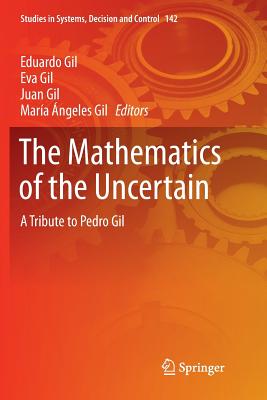How Interval and Fuzzy Techniques Can Improve Teaching: Processing Educational Data: From Traditional Statistical Techniques to an Appropriate ... (Studies in Computational Intelligence)
暫譯: 區間與模糊技術如何提升教學:教育數據處理:從傳統統計技術到適當的...(計算智慧研究)
Olga Kosheleva, Karen Villaverde
- 出版商: Springer
- 出版日期: 2017-11-02
- 售價: $4,440
- 貴賓價: 9.5 折 $4,218
- 語言: 英文
- 頁數: 362
- 裝訂: Hardcover
- ISBN: 3662559919
- ISBN-13: 9783662559918
-
相關分類:
機率統計學 Probability-and-statistics
海外代購書籍(需單獨結帳)
相關主題
商品描述
This book explains how to teach better and presents the latest research on processing educational data and presents traditional statistical techniques as well as probabilistic, interval, and fuzzy approaches. Teaching is a very rewarding activity; it is also a very difficult one – because it is largely an art. There is a lot of advice on teaching available, but it is usually informal and is not easy to follow. To remedy this situation, it is reasonable to use techniques specifically designed to handle such imprecise knowledge: the fuzzy logic techniques.
Since there are a large number of statistical studies of different teaching techniques, the authors combined statistical and fuzzy approaches to process the educational data in order to provide insights into improving all the stages of the education process: from forming a curriculum to deciding in which order to present the material to grading the assignments and exams.
The authors do not claim to have solved all the problems of education. Instead they show, using numerous examples, that an innovative combination of different uncertainty techniques can improve teaching. The book offers teachers and instructors valuable advice and provides researchers in pedagogical and fuzzy areas with techniques to further advance teaching.
商品描述(中文翻譯)
這本書解釋了如何更有效地教學,並介紹了最新的教育數據處理研究,涵蓋了傳統統計技術以及概率、區間和模糊方法。教學是一項非常有成就感的活動;但同時也是一項非常困難的工作,因為它在很大程度上是一門藝術。雖然有很多關於教學的建議,但通常都是非正式的,且不易遵循。為了解決這個問題,使用專門設計來處理這種不精確知識的技術是合理的:模糊邏輯技術。
由於有大量針對不同教學技術的統計研究,作者結合了統計和模糊方法來處理教育數據,以提供改善教育過程各個階段的見解:從制定課程到決定以何種順序呈現材料,再到評分作業和考試。
作者並不聲稱已經解決了所有教育問題。相反,他們通過大量例子展示了不同不確定性技術的創新組合可以改善教學。這本書為教師和講師提供了寶貴的建議,並為教育學和模糊領域的研究人員提供了進一步推進教學的技術。











